Kantuckkeean
Bronze Member
- Apr 30, 2009
- 1,608
- 1,879
- Detector(s) used
- F-22, cheapo pinpointer
- Primary Interest:
- All Treasure Hunting
Hi Everyone,
Our rooftop solar system went fully operational this past Wednesday. YAY!!!
We got twenty-eight 370W panels and a Tesla Powerwall 2 battery. Our home is fully electric and we have well water. Here's a photo of 18 of the 28 panels:
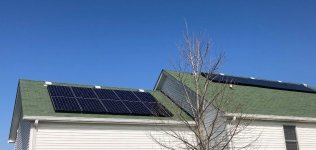
The system is quite smart. The panels prioritize the home's electric demand and feed it first. If the panels are producing more than the home's demand, then they power the home and charge the battery:
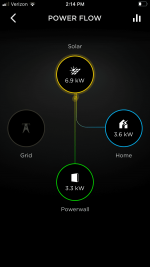
If the home's demand is greater than the panels are producing, then it starts to draw from the battery to make up the difference:
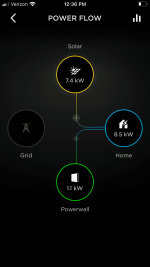
If the panels are producing more than the home's demand and the battery is at 100%, then they divert the excess to feed the grid:
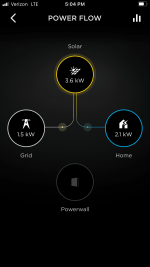
The battery only discharges at 5kW, so if the home's demand is greater than the battery and panels, then we draw from the grid:
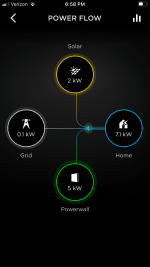
At night, when the panels aren't producing, the home will run from the battery, unless demand is greater than 5kW or if the battery reaches reserve capacity (ours is set to 10%), then the grid kicks in. It has been cold at night here lately, and the electric furnace uses a lot of electricity, so every time it kicks on, we've been drawing from the grid. One the battery reaches reserve capacity, we run of the grid alone, until the panels begin producing again.
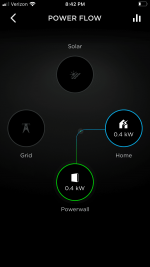
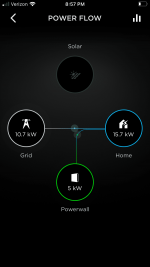
More to follow...
Our rooftop solar system went fully operational this past Wednesday. YAY!!!
We got twenty-eight 370W panels and a Tesla Powerwall 2 battery. Our home is fully electric and we have well water. Here's a photo of 18 of the 28 panels:

The system is quite smart. The panels prioritize the home's electric demand and feed it first. If the panels are producing more than the home's demand, then they power the home and charge the battery:

If the home's demand is greater than the panels are producing, then it starts to draw from the battery to make up the difference:

If the panels are producing more than the home's demand and the battery is at 100%, then they divert the excess to feed the grid:

The battery only discharges at 5kW, so if the home's demand is greater than the battery and panels, then we draw from the grid:

At night, when the panels aren't producing, the home will run from the battery, unless demand is greater than 5kW or if the battery reaches reserve capacity (ours is set to 10%), then the grid kicks in. It has been cold at night here lately, and the electric furnace uses a lot of electricity, so every time it kicks on, we've been drawing from the grid. One the battery reaches reserve capacity, we run of the grid alone, until the panels begin producing again.


More to follow...
Last edited:


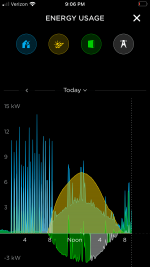
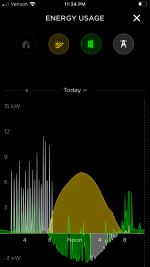

 . I had thought that putting up a stronger more storm resistant roof would have reduced my premium but found out that they looked at the replacement factor instead so I got a premium increase instead of a decrease. Still would have done it anyway as we had leak issues on our two previous roofs due to roof angles/previous owner addons etc that the metal roof has cured and like the solar panel we will be well past our life expectancy before the roof warranty runs out.
. I had thought that putting up a stronger more storm resistant roof would have reduced my premium but found out that they looked at the replacement factor instead so I got a premium increase instead of a decrease. Still would have done it anyway as we had leak issues on our two previous roofs due to roof angles/previous owner addons etc that the metal roof has cured and like the solar panel we will be well past our life expectancy before the roof warranty runs out.

